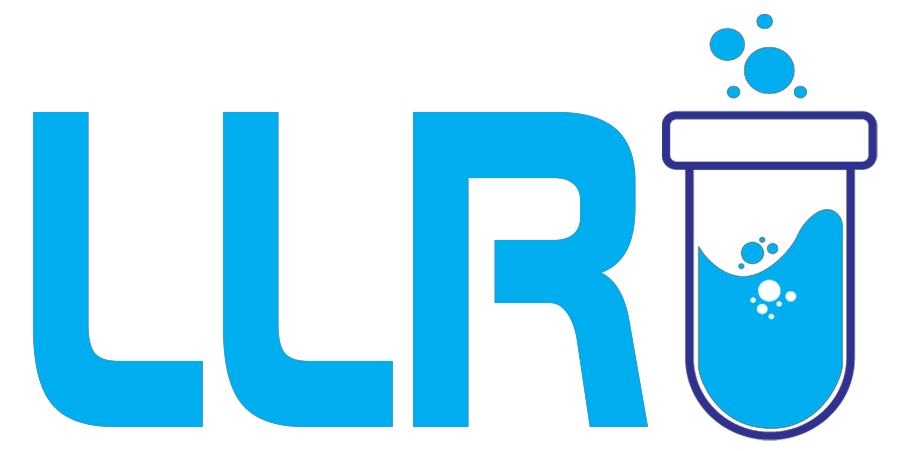Clinical SAS Interview Questions For Freshers: The pharmaceutical, biotech, and clinical research industries are booming, and with that growth comes the demand for skilled Clinical SAS programmers. And…breaking into the industry as a fresher can feel like stepping into uncharted waters.
You may have heard people say, “The right preparation is half the battle won.” Nowhere is this truer than when you’re preparing for interviews in the pharmaceutical and clinical trials domain.
One of the most searched topics among students and job seekers is “Clinical SAS interview questions for freshers.” And rightly so.
SAS (Statistical Analysis System) has become the backbone of clinical data analysis, enabling organizations to analyze, report, and comply with global regulations. For a fresher, cracking these interviews can be the gateway to careers in pharma companies, CROs, biotech firms, and healthcare analytics.
In this blog, we’ll explore some never-to-miss Clinical SAS interview questions for freshers, explain the logic behind them, provide tips on answering them, and even connect them to industry expectations.
We’ll also highlight training programs like the LLRI Clinical SAS Course, which have helped many students secure jobs in leading companies like IQVIA. So, are you ready to know the questions that could define your career path? Let’s get started!

Why Clinical SAS is a Popular Career Choice?
The pharmaceutical, biotech, and clinical research industries are booming, and with that growth comes the demand for skilled Clinical SAS programmers. These professionals play a vital role in analysing clinical trial data, generating regulatory-compliant reports, and ensuring data integrity for submissions to global agencies like the FDA or EMA.
For a fresher stepping into this space, it’s not just about knowing SAS software; it’s about understanding the clinical domain, compliance requirements, and the ability to apply technical skills in trial data scenarios.
And the first step to joining this rewarding career? Cracking the interview.
Why Freshers Should Focus on Clinical SAS Interview Preparation?
Many freshers underestimate interview prep and focus only on learning SAS syntax. But recruiters at CROs, pharma companies, and especially IQVIA, are looking for more. They want candidates who can:
- Understand clinical trial data structures.
- Apply SAS functions logically to solve real-world problems.
- Communicate effectively during discussions.
- Show awareness of industry standards like CDISC, SDTM, and ADaM.
That’s why preparing for Clinical SAS interview questions for freshers is a smart move. A structured approach ensures you not only know the answers but also understand why those answers matter.
Why SAS Matters in Clinical Research?
Before we get into the clinical SAS programmer interview questions and answers, it’s worth understanding why SAS holds such importance in clinical research.
- Regulatory compliance: SAS is widely accepted by the US FDA, EMA, and other regulatory bodies for clinical trial submissions.
- Data handling: Clinical trials generate huge amounts of data. SAS allows easy cleaning, manipulation, and reporting.
- Industry demand: Companies like IQVIA, Covance, Parexel, and Accenture prefer candidates with strong SAS skills.
According to a 2023 report by Pharma IQ, “Nearly 70% of top pharmaceutical firms continue to rely on SAS for regulatory submissions and analysis.” This means that learning SAS is not just an option – it’s an industry standard.

Top Clinical SAS Interview Questions for Freshers
Freshers often wonder: “What kind of questions should I expect?” To answer that, let’s go through some common questions you might face in interviews.
1. What is SAS and why is it used in clinical research?
This is often the opening question. Interviewers want to test your understanding of the basics.
Answer: SAS (Statistical Analysis System) is a software suite used for data management, advanced analytics, reporting, and visualization. In clinical research, SAS helps in analyzing patient data, creating reports, and generating outputs for regulatory submissions. It ensures accuracy, consistency, and compliance with guidelines like CDISC, SDTM, and ADaM.
Relating your answer to real-world scenarios, like reporting adverse events or patient demographics, shows awareness of the industry.
2. Can you explain the difference between SDTM and ADaM datasets?
This is a staple in clinical SAS programmer interview questions because companies want to see if you understand CDISC standards.
Answer:
- SDTM (Study Data Tabulation Model): Standardized format for organizing raw clinical trial data. It’s mainly submission-ready data for regulators.
- ADaM (Analysis Data Model): Datasets derived from SDTM, specifically designed for statistical analysis.
Think of SDTM as the raw ingredients, while ADaM is the prepared dish ready to serve.
3. Can you list some common SAS procedures used in clinical trials?
Answer: Some of the commonly used procedures are:
- PROC MEANS: To calculate descriptive statistics.
- PROC FREQ: To compute frequency counts.
- PROC REPORT: For customized reports.
- PROC SQL: For data extraction and manipulation.
- PROC TRANSPOSE: To reshape datasets.
These procedures form the foundation of most clinical SAS programmer interview questions and answers.
4. Explain the difference between Data Step and Proc Step.
This question appears in nearly every set of Clinical SAS interview questions for freshers.
Answer: The Data Step is used to create, modify, or manage datasets, while the Proc Step is used to analyse data or generate reports. For example, you’d use a Data Step to clean patient demographics and PROC MEANS to calculate summary statistics.
Read More: Top Clinical SAS Interview Questions with Detailed Answers
5. How do you handle missing values in SAS?
Answer: Missing data is common in clinical trials. In SAS, missing values can be handled in multiple ways:
- Replacing with mean/median values.
- Using IF conditions to flag missing data.
- Applying PROC MI for multiple imputations.
Handling missing data correctly shows you understand both technical and domain-specific needs.
6. Can you explain a macro in SAS and its usage?
Answer: A macro in SAS automates repetitive tasks, reduces errors, and saves time. For example, instead of writing multiple codes for generating adverse event tables across different studies, you can create one macro and reuse it.
Interviewers love it when you give an example of how macros improve efficiency.
7. What are some challenges you expect in working as a Clinical SAS Programmer?
This is a common question even in IQVIA clinical SAS interview questions because they want to assess how prepared you are.
Answer:
- Understanding clinical protocols and terminologies.
- Managing large datasets with accuracy.
- Meeting tight regulatory timelines.
- Ensuring outputs are compliant with FDA/EMA standards.
By sharing a thoughtful response, you’ll show interviewers that you’re realistic and ready.
8. Give an example of a situation where you used SAS to solve a problem.
This is more of a behavioural question and commonly shows up in IQVIA clinical SAS interview questions.
Answer: Suppose there was inconsistent lab data with duplicate records. I wrote a PROC SORT with NODUPKEY option and used PROC FREQ to check for anomalies. This cleaned the dataset and ensured accuracy in reporting.

SAS and SaaS: Understanding the Difference
When preparing for Clinical SAS interview questions for freshers, many candidates confuse SAS with SaaS. Although they sound similar, they are completely different concepts and some interviewers even throw this as a trick question to check if you know the difference.
What is SAS?
SAS (Statistical Analysis System) is a software suite used for data analysis, statistical modelling, and reporting, especially in industries like clinical research, pharma, and healthcare analytics. In clinical trials, SAS is primarily used to manage patient data, create submission-ready reports, and comply with CDISC, FDA, and EMA guidelines.
What is SaaS?
SaaS (Software as a Service), on the other hand, is a software delivery model. Instead of installing software on your computer, SaaS allows you to use applications over the internet on a subscription basis. Examples include Google Workspace, Salesforce, and Office 365.
SAS vs SaaS in Simple Terms
- SAS: A tool used for statistical programming and data analysis.
- SaaS: A method of delivering software services online.
For example, if you’re working as a Clinical SAS Programmer, you’d use SAS to clean and analyse clinical trial data. But if your company uses tools like Salesforce or Zoho CRM hosted online, those fall under SaaS.
Why Freshers Should Know This
- In interviews, understanding SAS vs SaaS shows you’re not just repeating definitions but actually aware of broader IT concepts.
- It can also help when companies ask domain-crossing questions, especially if the CRO or pharma company uses SaaS-based platforms alongside SAS for clinical trial management.
Some companies now even host SAS as a SaaS model (cloud-based SAS software). Knowing this could give you an extra talking point in your interviews.
IQVIA Clinical SAS Interview Questions
Since IQVIA is one of the largest CROs globally, many students search specifically for IQVIA clinical SAS interview questions. From what students and professionals report, here are some examples:
- Explain SDTM domains in detail.
- How would you validate datasets for compliance?
- Write a simple PROC SQL query to extract patient IDs with adverse events.
- How do you ensure traceability between raw data, SDTM, and ADaM?
Quote from a former IQVIA fresher:
“The interviewer focused more on CDISC standards than coding. They wanted to check if I understood why SAS outputs need to align with global standards.”
This shows that beyond coding, understanding the “why” behind SAS is just as important.
Clinical SAS Programmer Interview Questions and Answers
To make things easier, here’s a quick look at some commonly asked clinical SAS programmer interview questions and answers:
- What is PROC REPORT used for? To create flexible, customized reports with grouping and summarizing.
- How do you merge datasets in SAS? By using MERGE in a DATA step along with BY statements.
- What’s the role of formats in SAS? They help display values in a more readable form without changing the actual data.
- Difference between WHERE and IF in SAS? WHERE filters data before processing, IF after processing.
Having answers like these ready will make you confident during interviews.
LLRI Clinical SAS Course
If you’re serious about cracking Clinical SAS interview questions for freshers, the right training helps.
LLRI Clinical SAS Course Highlights:
- Covers Base SAS, data manipulation, macros, SQL, and compliant reporting.
- Prepares you for the SAS Base exam.
- Includes placement assistance.
- 1-Month Clinical SAS Course FREE with Pro & Advanced Diploma in Clinical Research.
- Offer applicable on new enrolments.
What makes this even more interesting? LLRI is an internal hiring partner with IQVIA. Several students have already secured roles there after training.
Clinical SAS Course – 1‑Month FREE with Pro/Advanced Bundles
So, if you’re looking for clinical SAS training in Bangalore or exploring a clinical SAS course in Bangalore, LLRI can be a strong stepping stone…to your career success!

What’s Next…? After the Interview
Freshers often ask, “What’s next after I clear the interview?” Here’s what it can look like…..
- Junior Clinical SAS Programmer: Entry-level, handling coding and reporting.
- Statistical Programmer: Works closely with statisticians.
- Senior Programmer/Team Lead: Supervises teams and manages regulatory submissions.
- Data Scientist in Pharma/Healthcare: Leverages SAS with ML and AI for predictive analytics.
Investing in a post graduate diploma in clinical research from a reputed institute like the Institute of Clinical Research India or choosing the best clinical research institute in India can also give your career a strong foundation.
On A Final Note…
Preparing for Clinical SAS interview questions for freshers doesn’t have to feel overwhelming. The key lies in understanding SAS fundamentals, being aware of CDISC standards, and practising real-world problems.
Remember:
- Brush up on coding (PROC SQL, PROC REPORT, macros).
- Understand SDTM and ADaM datasets thoroughly.
- Be ready for domain-related questions, especially in IQVIA clinical SAS interview questions.
- Consider structured training through the LLRI Clinical SAS Course to gain a competitive edge.
If you prepare well, your opportunity to shine in the world of clinical research isn’t far away.
FAQs
Q1. Are Clinical SAS interview questions for freshers mostly technical?
Not always. While many questions focus on coding and procedures, interviewers also test your understanding of clinical concepts and regulatory requirements.
Q2. How long does it take to prepare for a Clinical SAS interview?
With focused effort, 3–6 months of practice in SAS and CDISC standards is enough. Structured courses can reduce this time.
Q3. Do companies like IQVIA hire freshers in SAS?
Yes. In fact, IQVIA frequently recruits trained SAS programmers. That’s why many candidates prepare using IQVIA clinical SAS interview questions.

